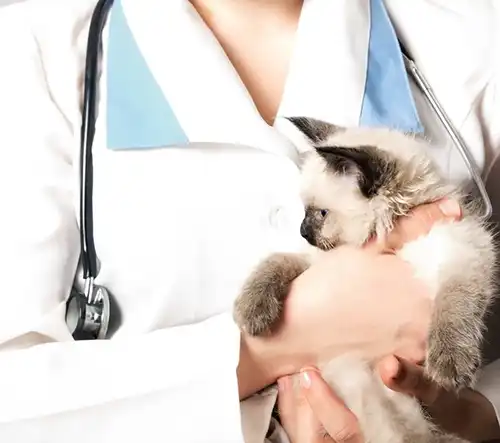Nevada has some truly unique and beautiful characteristics. However, like any environment, our dry, dusty terrain does present some specific dangers to pets. One thing that pet owners-particularly people with dogs-should be aware of is Valley Fever. A local Las Vegas, NV vet discusses Valley Fever in this article.
Basics
Valley Fever starts as a respiratory disease, but can move to other parts of the body. The disease is spread through contaminated spores, which can easily be inhaled. These spores thrive in dry environments, and are most commonly found here in the Southwest. As you may know, Valley Fever can affect both pets and people. However, because they love to sniff at everything, our canine companions are particularly at risk. Cats can also get Valley Fever, though it’s much more common in dogs.
Symptoms
Symptoms generally start to appear about three weeks after infection. One of the most common signs of Valley Fever is coughing. Other symptoms include reduced appetite, swollen testicles, limping, lameness, seizures, weight loss, lethargy, and/or swollen lymph nodes. Abscesses and wounds that don’t heal can also be indicative of Valley Fever. Eye inflammation is another possible symptom. Contact your vet immediately if you notice any of these warning signs.
Treatment
Fortunately, there are treatment options available for Valley Fever. If Fido shows symptoms of Valley Fever, you’ll want to bring him to the vet right away for testing. Once a diagnosis has been made, you’ll be able to discuss various treatment plans and home care. Many dogs recover with proper treatment. However, left untreated, Valley Fever can be fatal. As with many other health issues in pets, early diagnosis and treatment can make a huge difference. Ask your vet for more information.
Prevention
Valley Fever is in the environment here, so there’s no foolproof way to protect Fido from it. However, there are things you can do to reduce the chances of your furry buddy getting infected. Don’t leave your canine pal in yards or parks that have not been landscaped. Areas with gravel, rock, or grass are much safer than dry, dusty ones. Avoid walking your pooch in open desert or undeveloped areas. Also, keep your pup inside as much as possible on windy days and during dust storms.
Please contact us, your Las Vegas, NV pet hospital, for all your dog’s veterinary care needs. We’re here to help!






!Social Media Icons